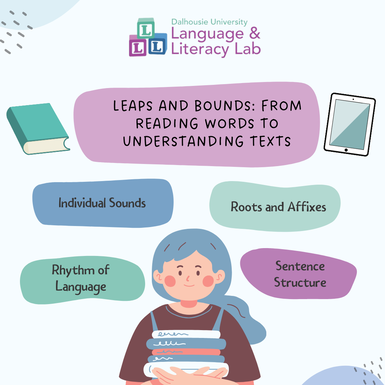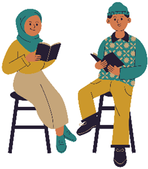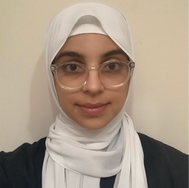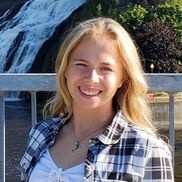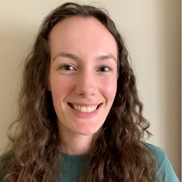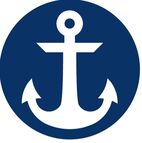Leaps and Bounds
|
WHAT IS THE STUDY ABOUT?
Complex words and sentences are common in written materials. Awareness of these aspects of language is likely key in supporting children’s reading comprehension. The goal of this project is to gain a deeper understanding of how children’s oral language skills support their reading development across the elementary grades and use this information to inform teaching strategies that will support strong reading outcomes for all children. |
WHY IS READING COMPREHENSION IMPORTANT?
Reading comprehension is the ability to understand written text. It is one of the most important skills that children learn in elementary school and is necessary to fully participate in many aspects of society as an adult. On average, just over half of Canadians are at or above the minimum literacy needed to participate in society (Statistics Canada 2012 Data). This means that almost 50% of Canadians do not have the literacy levels needed, affecting their ability to participate in the economy, education and lifelong learning, democracy, and managing their personal health. The World Literacy Foundation (2015) estimates that illiteracy costs the world economy 1 trillion dollars annually.
Reading comprehension is the ability to understand written text. It is one of the most important skills that children learn in elementary school and is necessary to fully participate in many aspects of society as an adult. On average, just over half of Canadians are at or above the minimum literacy needed to participate in society (Statistics Canada 2012 Data). This means that almost 50% of Canadians do not have the literacy levels needed, affecting their ability to participate in the economy, education and lifelong learning, democracy, and managing their personal health. The World Literacy Foundation (2015) estimates that illiteracy costs the world economy 1 trillion dollars annually.
PROJECT HISTORY
In 2018, Dr. Hélène Deacon (Director of the Language and Literacy Lab) received funding from the Social Sciences and Humanities Research Council to support a large-scale project investigating the development of children’s reading comprehension. Eighteen schools and over 300 students in the Halifax and South Shore Regional Centres for Education signed up to take part in yearly activities between Grade 1 and 6 to help us learn more about the skills that are important in children’s understanding of complex texts.
In 2018, Dr. Hélène Deacon (Director of the Language and Literacy Lab) received funding from the Social Sciences and Humanities Research Council to support a large-scale project investigating the development of children’s reading comprehension. Eighteen schools and over 300 students in the Halifax and South Shore Regional Centres for Education signed up to take part in yearly activities between Grade 1 and 6 to help us learn more about the skills that are important in children’s understanding of complex texts.
WHAT HAVE WE FOUND SO FAR?
Recently, Dr. Hélène Deacon (Director of the Language and Literacy Lab) and Dr. George Frempong (Director of Research of the Delmore “Buddy” Daye Learning Institute) presented findings from this study. You can view the full presentation below.
Recently, Dr. Hélène Deacon (Director of the Language and Literacy Lab) and Dr. George Frempong (Director of Research of the Delmore “Buddy” Daye Learning Institute) presented findings from this study. You can view the full presentation below.
In this study, we focus on capturing oral language across a range of more precise skills to determine which skills are most important, at which points in time, to ensure the development of strong literacy skills for all children. We found that children’s awareness of (1) individual sounds, (2) roots and affixes, (3) sentence structure, and (4) the rhythm of language are all important to early reading. We found that children’s awareness of each of roots and affix structures of words, of sentence structure and of sound structure are significant predictors of both their word reading and reading comprehension in Grade 1. By illuminating the importance of these distinct oral language skills, researchers and educators can now turn toward developing instruction that targets these precise skills.
Along with George Frempong, Director of Research at our community partner the Delmore ‘Buddy’ Daye Learning Institute, and financial support from IURN (Inter-University Research Network), we also aim to address the achievement gap in Nova Scotia and employ intersectional analysis to explore the extent to which learners’ racial and socioeconomic identity impact their language skills and opportunity to learn. Thus far, our research shows that students of African descent and African Nova Scotian students have lower scores on Grade 1 word reading and awareness of individual sounds, roots and affixes, and sentence structure compared to a sample of all other Nova Scotian students, suggesting unique learning challenges for this group.
Along with George Frempong, Director of Research at our community partner the Delmore ‘Buddy’ Daye Learning Institute, and financial support from IURN (Inter-University Research Network), we also aim to address the achievement gap in Nova Scotia and employ intersectional analysis to explore the extent to which learners’ racial and socioeconomic identity impact their language skills and opportunity to learn. Thus far, our research shows that students of African descent and African Nova Scotian students have lower scores on Grade 1 word reading and awareness of individual sounds, roots and affixes, and sentence structure compared to a sample of all other Nova Scotian students, suggesting unique learning challenges for this group.
INFO FOR SCHOOLS AND PARENTS
What Do Students, Parents, Schools, and Teachers Receive for Taking Part?
Students receive a certificate of participation and small prizes like pencils, erasers, or stickers for taking part. Schools receive a $100 gift card and homeroom teachers of participating students receive a $25 gift card as a thank you for their time and effort. Following our visit, we provide school administrators and the students’ teachers with participating students’ word reading and reading comprehension levels, provided we have parental consent to do so. We also provide this information to parents if they chose to receive it when signing up for the study in year 1.
Reminder Notices for Parents
Approximately two weeks prior to our visit, we will deliver reminder notices to participating schools to be sent home to the parents of students taking part in our study. The notice includes information about the study and provides instructions for withdrawing consent.
Who Will Visit Participating Schools?
Two to four members of our research team will visit participating schools. All team members have clean criminal record with vulnerable sector checks and child abuse registry checks.
Health Safety Protocols
Our research team will meet and exceed all school and Nova Scotia public health guidelines during our visit. Note that all supplies and materials used by our research team will be sterilized in between students (e.g., laptops, headphones, etc).
Format of Activities
Participating students will work with our team members to complete a range of language activities. Some of the activities students complete individually with one of our team members, others are completed on a computer in small groups of five or six, and others are completed on pen and paper in a larger group setting of up to 25 students. As always, we make every effort to ensure students do not miss any tests or other important activities.
What Kind of Space Does Our Team Require?
When our team arrives, we will need a separate space to work in, like the library or an unused classroom/office. An optimal space would be able to accommodate six laptops with students and an area for two team members to simultaneously complete individual activities with students. For one hour, on one day, we would require a larger space to complete the larger pen and paper group activity. We can work with the teachers to determine which day would be best for this. We recognize that space in schools is often limited, and we are happy to work in whatever space schools able to provide!
What Do Students, Parents, Schools, and Teachers Receive for Taking Part?
Students receive a certificate of participation and small prizes like pencils, erasers, or stickers for taking part. Schools receive a $100 gift card and homeroom teachers of participating students receive a $25 gift card as a thank you for their time and effort. Following our visit, we provide school administrators and the students’ teachers with participating students’ word reading and reading comprehension levels, provided we have parental consent to do so. We also provide this information to parents if they chose to receive it when signing up for the study in year 1.
Reminder Notices for Parents
Approximately two weeks prior to our visit, we will deliver reminder notices to participating schools to be sent home to the parents of students taking part in our study. The notice includes information about the study and provides instructions for withdrawing consent.
Who Will Visit Participating Schools?
Two to four members of our research team will visit participating schools. All team members have clean criminal record with vulnerable sector checks and child abuse registry checks.
Health Safety Protocols
Our research team will meet and exceed all school and Nova Scotia public health guidelines during our visit. Note that all supplies and materials used by our research team will be sterilized in between students (e.g., laptops, headphones, etc).
Format of Activities
Participating students will work with our team members to complete a range of language activities. Some of the activities students complete individually with one of our team members, others are completed on a computer in small groups of five or six, and others are completed on pen and paper in a larger group setting of up to 25 students. As always, we make every effort to ensure students do not miss any tests or other important activities.
What Kind of Space Does Our Team Require?
When our team arrives, we will need a separate space to work in, like the library or an unused classroom/office. An optimal space would be able to accommodate six laptops with students and an area for two team members to simultaneously complete individual activities with students. For one hour, on one day, we would require a larger space to complete the larger pen and paper group activity. We can work with the teachers to determine which day would be best for this. We recognize that space in schools is often limited, and we are happy to work in whatever space schools able to provide!
QUESTIONS ABOUT THE STUDY
If you have any questions about our study, please contact Language and Literacy Lab manager Stef Hartlin at [email protected].
If you have any questions about our study, please contact Language and Literacy Lab manager Stef Hartlin at [email protected].
MEET THE RESEARCH TEAM
The Leaps and Bounds study is led by world renown researcher Dr. Hélène Deacon and her team at the Language and Literacy Lab at Dalhousie University.
The Leaps and Bounds study is led by world renown researcher Dr. Hélène Deacon and her team at the Language and Literacy Lab at Dalhousie University.
|
Lauren Gallant
Research Assistant |
Hannah Millar
Research Assistant |
LEAPS AND BOUNDS IN THE NEWS
(
THANK YOU TO OUR PARTNERS AND FUNDERS
Thank you to all the students, parents, teachers, and administrators who continue to make our work possible!
Thank you to all the students, parents, teachers, and administrators who continue to make our work possible!

